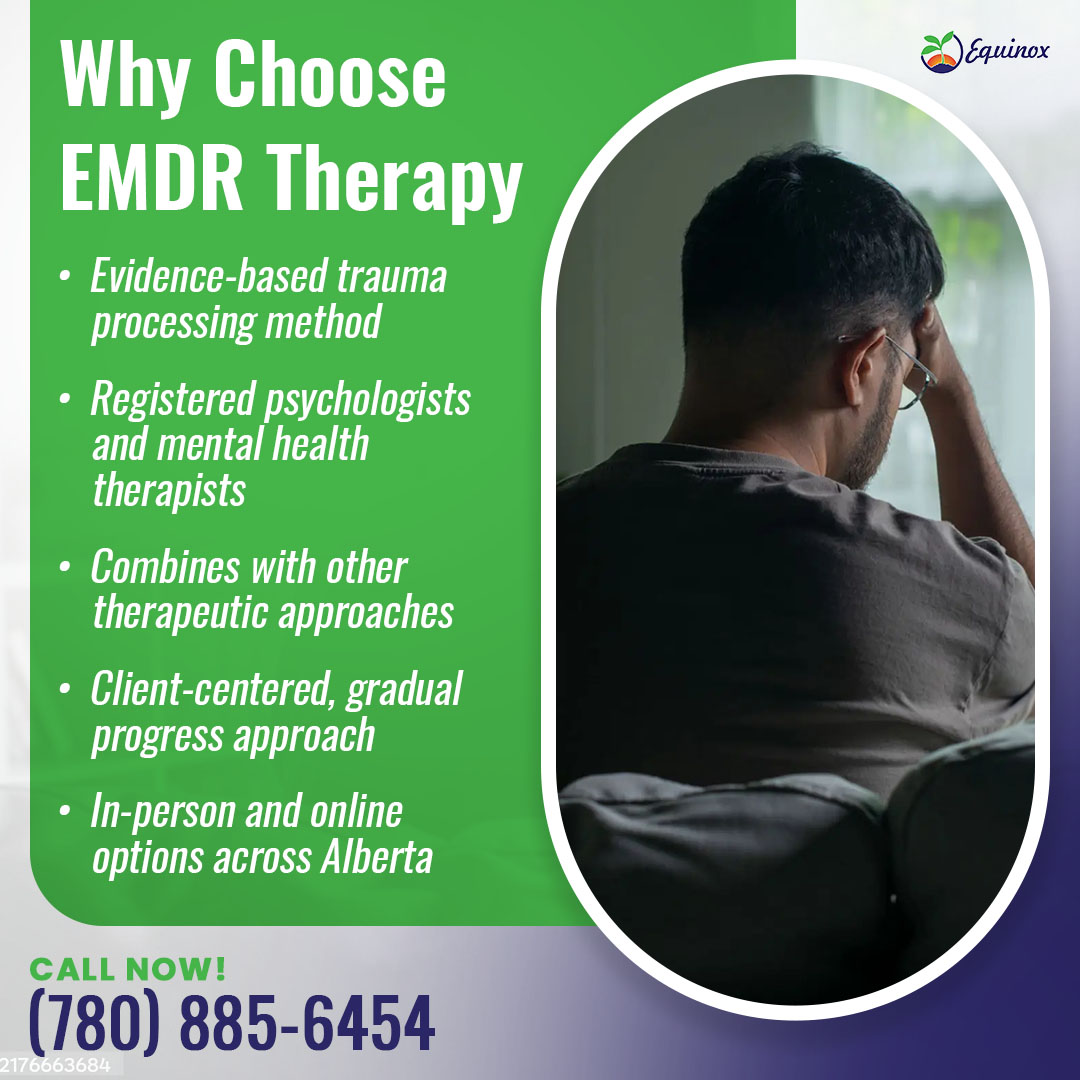Eye Movement Desensitization Reprocessing (EMDR) is a psychotherapeutic technique used to treat Posttraumatic Stress Disorder, mental health problems, and psychiatric disorders. Traumatic memories are recorded in the brain differently than normal everyday memories are, and it is because of this different type of memory processing that recalling one of these memories – on purpose, or by accident – often results in intense emotional and physical reactions (EMDR Canada, 2014). EMDR has been shown to help your brain re-process traumatic memories so that they essentially get the chance to be processed and stored the way “regular memories” are. This tends to result in a reduction of those adverse reactions when the traumatic memories are recalled (EMDR International Association).
What does EMDR Treatment look like?
The International Association for EMDR outlines the phases of EMDR treatment as follows:
The first couple of sessions focus on taking an adequate history from the client about their specific issue they are seeking treatment for, and developing a treatment plan specific for the individual. The therapist will then teach the client certain de-escalation tools such as relaxation and visualization techniques to help the individual deal with thoughts and feelings which may arise during and between treatments.
After an assessment of the presenting memories and negative self-beliefs, decisions are made around what will be the target of treatment. Then, the desensitization phase begins. The client focuses on the disturbing memory, feeling, thought, or self-belief while engaging in left-right eye movement, or other types of right-left stimulation such as tapping. When the client stops and relaxes, typically they will report changes in their feelings, thoughts or self-beliefs originally associated with the traumatic event.
The final stages of EMDR treatment involve increasing the strength of the new positive self-beliefs, feelings, or thoughts which arose during the desensitization phase. Residual tension from traumatic experiences are also eliminated the body. Ensuring the individual has closure at the end of each session and an evaluation of the overall process is also essential to complete EMDR treatment (EMDR International Association).
To find an EMDR Therapist:
If you or someone you know is interested in EMDR, or other types of trauma therapy in Edmonton, feel free to speak to a local mental health practitioner and ask for help with a referral. To find a psychologist, psychiatrist, or mental health therapist in Edmonton who specializes in EMDR specifically, you can visit www.psychologytoday.com and search for therapists who specialize in EMDR. The “Find a Therapist” search function allows you to refine your search for psychologists specializing in specific treatment options such as EMDR under the heading “Treatment Orientation”. The Psychology Today website includes therapist profiles so you can get to know a bit about the way each therapist to help you in your search to find one that is a good fit for you.
Visit the EMDR Canada website http://emdrcanada.org/ for more information on EMDR.



